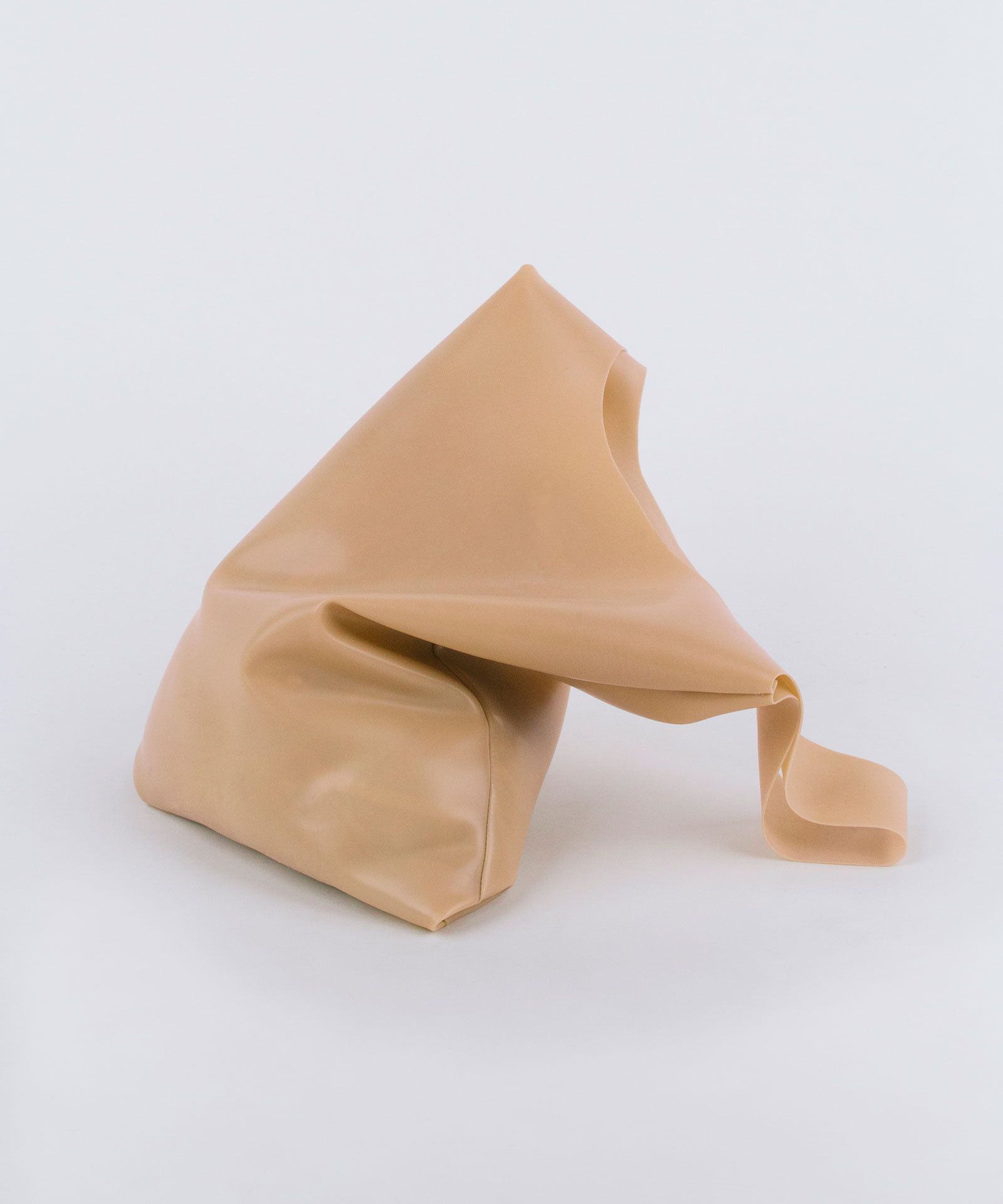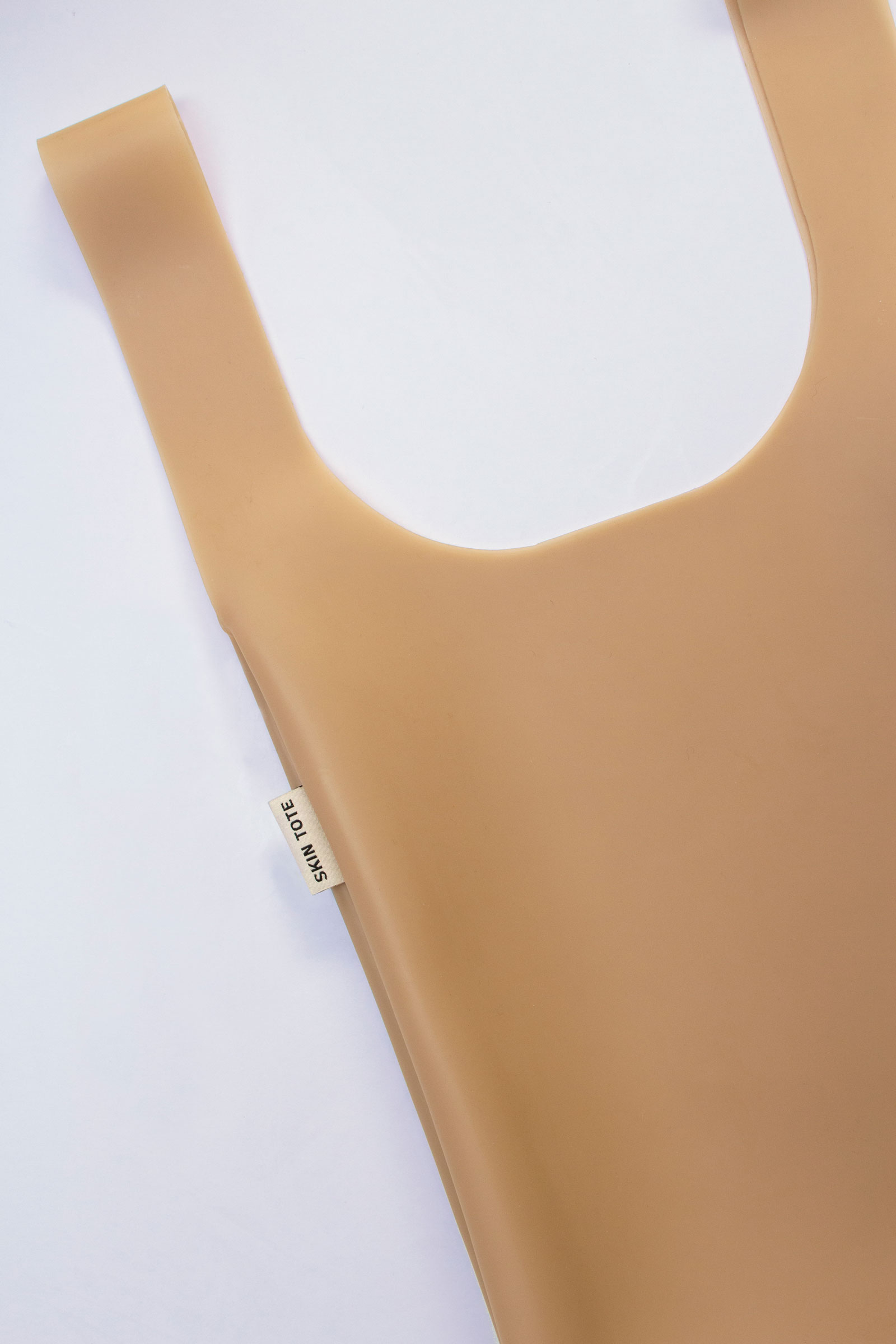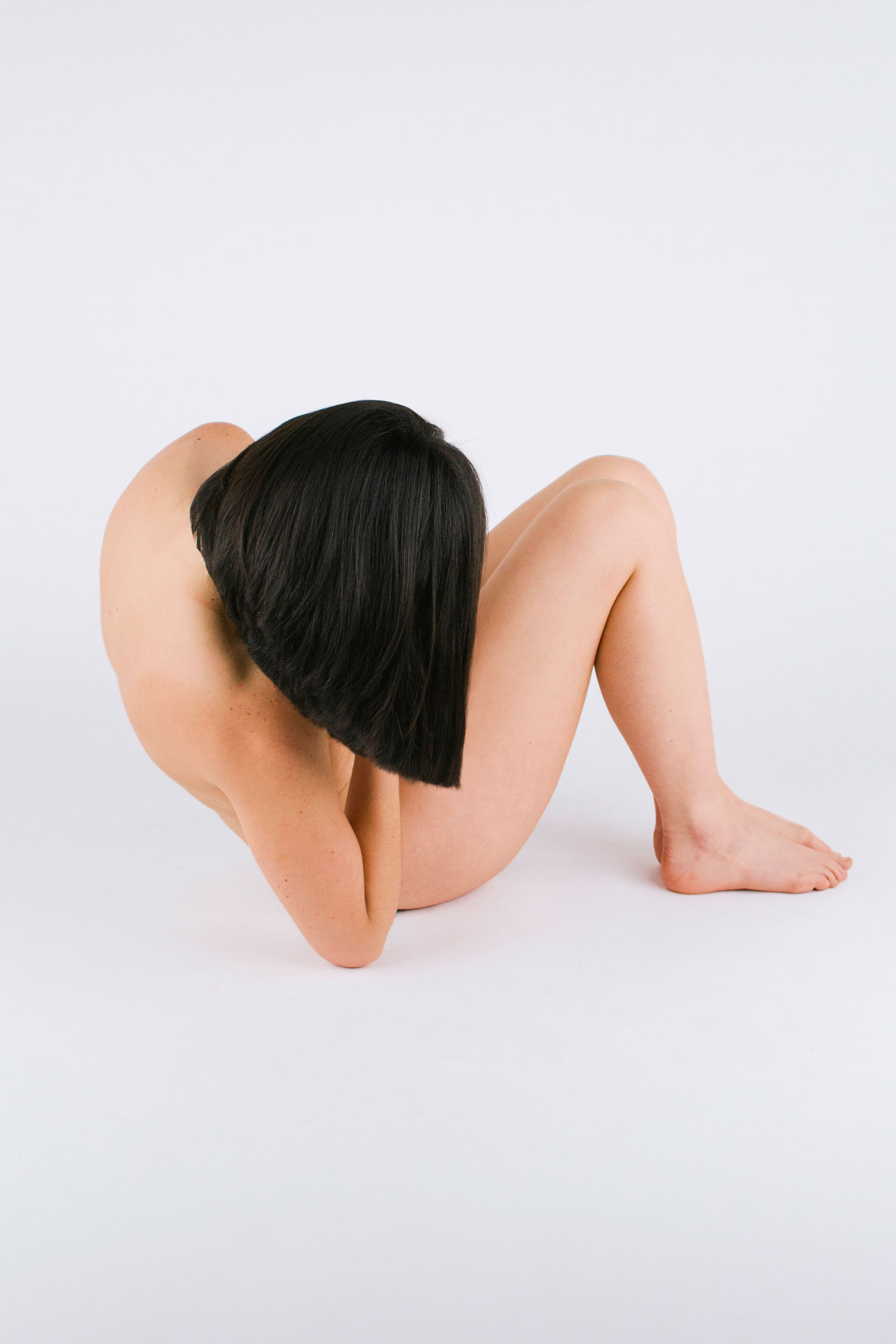“Our skin is a container that contains our organs and our personality, and the color of that container should not contain our value,” says Satomi Minoshima, a Japanese designer based in Eindhoven, the Netherlands.
Satomi created “Skin Tote” as a medium to convey this message. “The Skin Tote is not a symbolic skin color that is defined by race, but a symbol of diversity as a color, the depth and beauty of ‘skin color’ that cannot be expressed in a single word.”
- “Skin Tote” is made using silicone. Photo courtesy of Satomi Minoshima
- Each model posed to appear as the bag as part of “Skin Tote.” Photo courtesy of Satomi Minoshima
Work for “Skin Tote” began with color research on skin tones, its reaction to UV rays, but also reactions to skin tone in the world. “Our skin changes its color by synthesizing pigments in response to the amount of sunlight,” Satomi says. “On the other hand, skin color also extends to cultural and social backgrounds and affects how individuals are treated in the community. Although we are beginning to understand this diversity, I feel it is not enough yet.”
The bag is a metaphor for human skin, and each model is posed in the same pose as the bag to make it look like a container. In order to make the skin texture similar to that of the skin, silicone, which is also used for prosthetics, was used as a material. The color of each bag was mixed after first measuring the skin tone of the models, and the silicone sheet itself is produced at Satomi’s atelier.
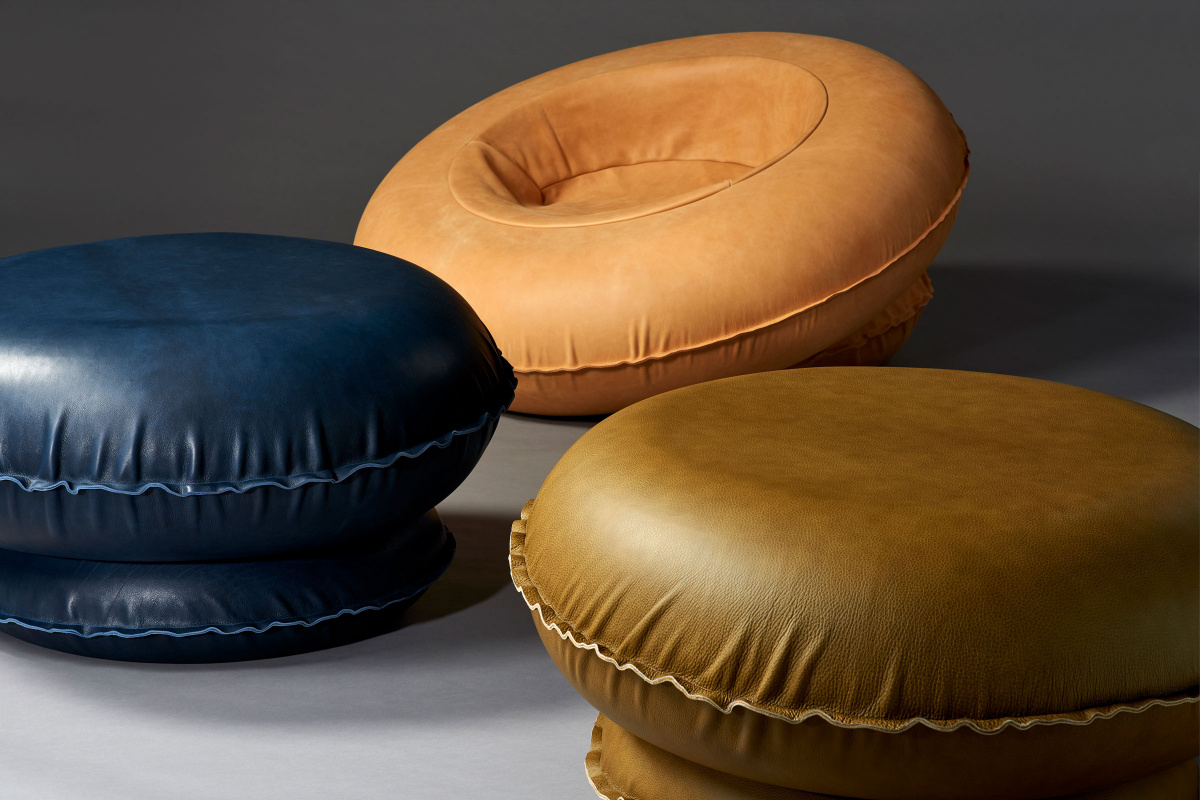
“Inflatable Leather” by Satomi Minoshima. Photo by Pierre Castignola
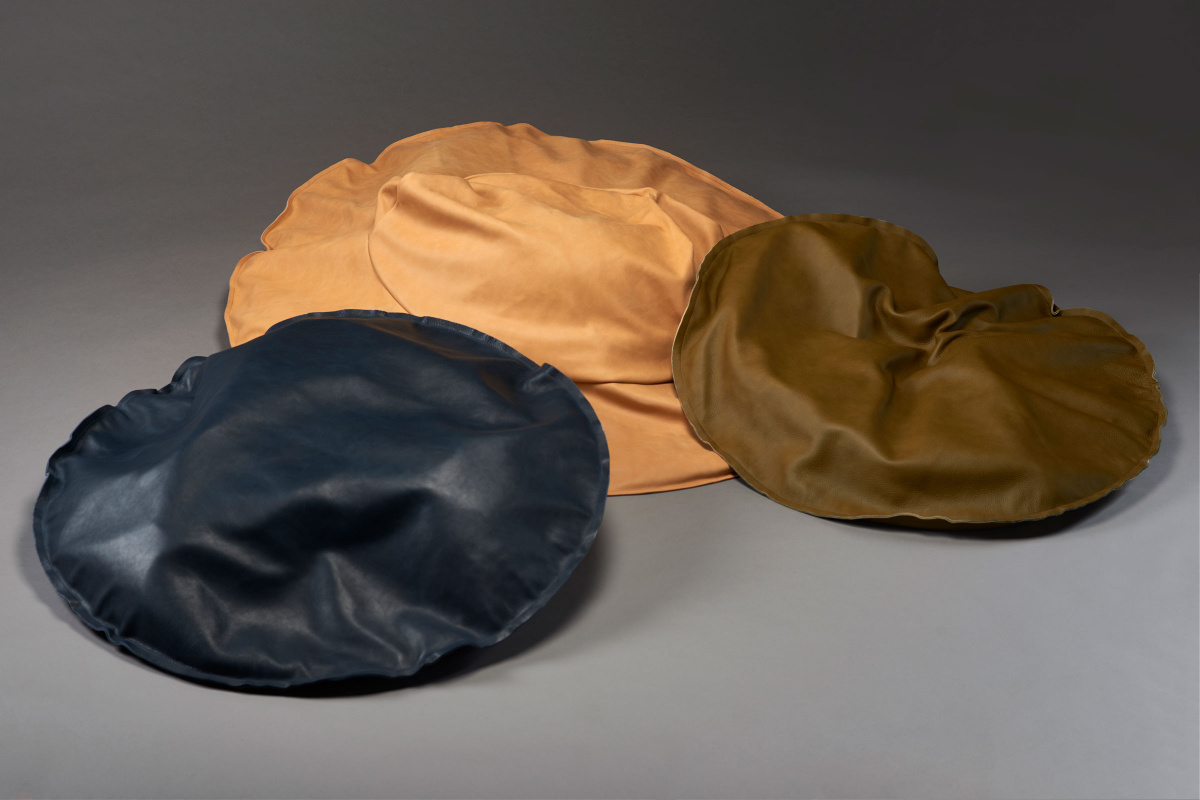
“I chose the colors I would want to have in my room,” says Satomi Minoshima of “Inflatable Leather.” Photo by Pierre Castignola
Satomi exhibited “Skin Tote” as well as “Inflatable Leather” as part of the Rising Talent Awards Japan at Maison & Objet. These works were initially created for graduation projects at Design Academy Eindhoven in 2019.
Children’s inflatable playgrounds and mattresses inspired “Inflatable Leather.” “I was interested to see how a flat object could be transformed into a three-dimensional object by adding air to fill the space,” Satomi says. “Inflatable materials are easy to carry and light. On the other hand, they look inexpensive. Leather is long-lasting and has rich texture. I wanted to incorporate the best of each material into this work.”
An inflatable inner structure is covered with real leather, and you can inflate the chair by yourself. “Unlike traditional leather furniture, which tends to be quite heavy, this series of inflatable chairs is lightweight and makes it easy to move around in a space.”
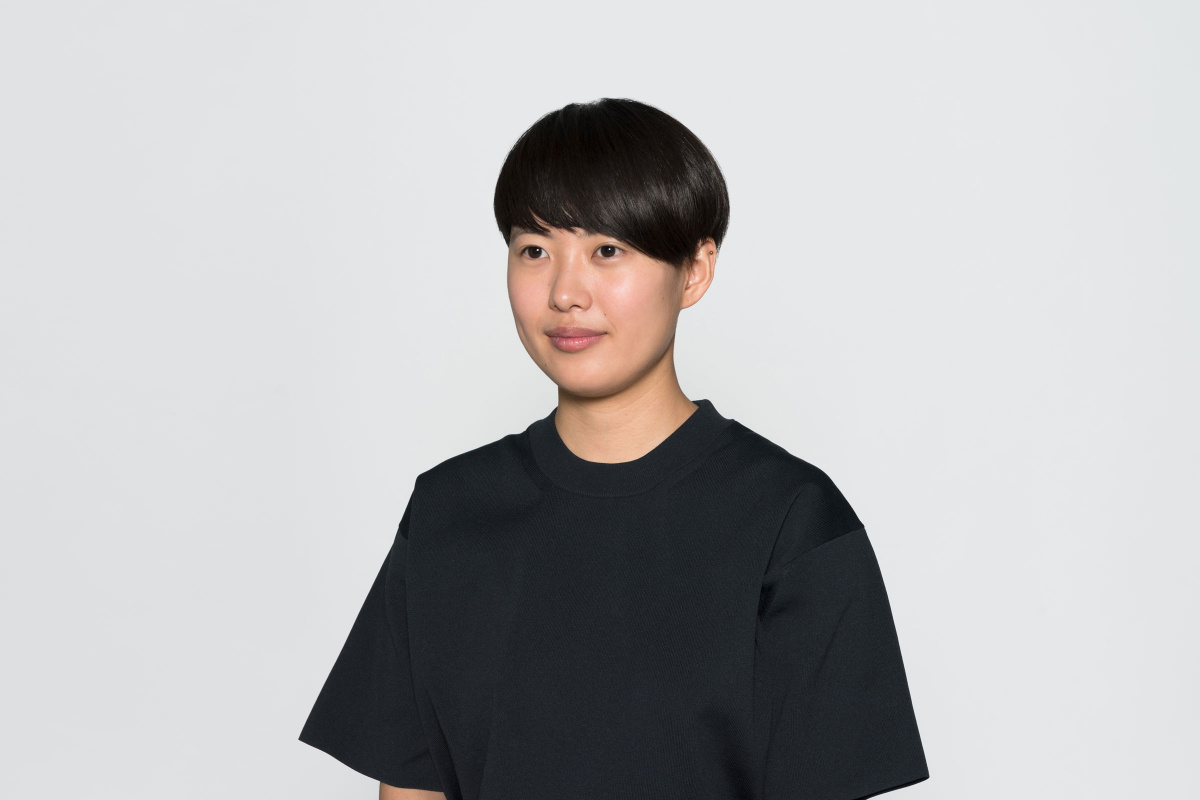
Satomi Minoshima begins her work with flat materials like fabric or leather from her studio in the Netherlands. Photo by Fujita Keisuke
Satomi currently continues to work from a shared studio space in Eindhoven with a friend, Hyunjee Jung, who is also a designer. She says it’s a simple, bright space with high ceilings and windows where she does her research, often taking a two-dimensional approach beginning with flat materials like fabric or leather.
“Before coming to the Netherlands I worked for a stationary company as a graphic designer,” she says. “I feel that my expression became more three-dimensional with texture after I came into contact with a lot of materials at Design Academy Eindhoven in the Netherlands.”
